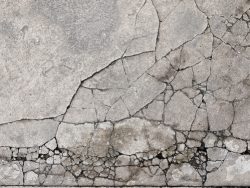Why Does Concrete Crack?

1. Excess water content
One of the primary reasons why concrete cracks is due to an excess water content during the mixing process. When water is added in excess, it creates a weaker concrete mixture. As the concrete dries and cures, the excess water evaporates, resulting in shrinkage. This shrinkage causes stress within the concrete, leading to cracks.
2. Insufficient curing time
Proper curing is essential for ensuring the strength and durability of concrete. Unfortunately, in many construction projects, the curing time is often rushed or not given enough attention. Insufficient curing time prevents the concrete from reaching its full strength, making it more susceptible to cracking. It is crucial to follow the manufacturer’s guidelines for curing time to minimize the risk of cracks.
3. Rapid temperature changes
Concrete is known to expand and contract with changes in temperature. Extreme temperature variations, especially rapid ones, can cause the concrete to expand or contract rapidly, resulting in cracks. This is particularly common in regions with large temperature fluctuations between seasons. To prevent or minimize cracking due to temperature changes, construction professionals incorporate expansion joints into the concrete structure, allowing for the concrete to move and absorb temperature-induced stress without cracking.
4. Improper construction practices
Quality control during the construction process plays a significant role in preventing concrete cracking. Improper construction practices, such as inadequate reinforcement, incorrect joint spacing, or inadequate compaction, can compromise the integrity of the concrete and lead to cracks. It is crucial for construction teams to follow industry best practices and adhere to structural design specifications to ensure a robust and crack-resistant concrete structure.
5. Shrinkage
Shrinkage is a natural process that occurs as concrete cures and dries. As the water content evaporates, the concrete volume reduces, resulting in shrinkage. This shrinkage can cause internal stress, which if not adequately accounted for, will lead to cracking. To minimize shrinkage-related cracking, concrete mixtures can be modified with additives to reduce water content or enhance the mixture’s ability to handle shrinkage.
6. Overloading
Concrete structures are designed to withstand specific loads and stresses. Overloading the structure beyond its design limits can cause excessive stress on the concrete, leading to cracking. This can occur due to changes in usage, such as increased traffic or additional weight placed on the structure. Proper maintenance and monitoring are necessary to ensure that the loads imposed on the concrete are within its capacity to avoid cracking.
7. Chemical reactions
In some cases, chemical reactions can cause concrete to crack. One such reaction is known as alkali-silica reaction (ASR), which occurs when reactive silica in the aggregate reacts with the alkaline cement paste. Over time, this reaction produces a gel-like substance that expands, causing significant cracking and structural damage. The use of low-alkali cement or non-reactive aggregates can help prevent ASR and subsequent cracking.
Summary
Concrete cracking is a prevalent problem in the construction industry. Excess water content, insufficient curing time, rapid temperature changes, improper construction practices, shrinkage, overloading, and chemical reactions are some of the factors contributing to concrete cracking. By understanding these reasons and implementing proper construction techniques, it is possible to minimize the occurrence of cracks and ensure the longevity and integrity of concrete structures.
Got Questions? Let Us Help!
Categorised in: Concrete
This post was written by admin
